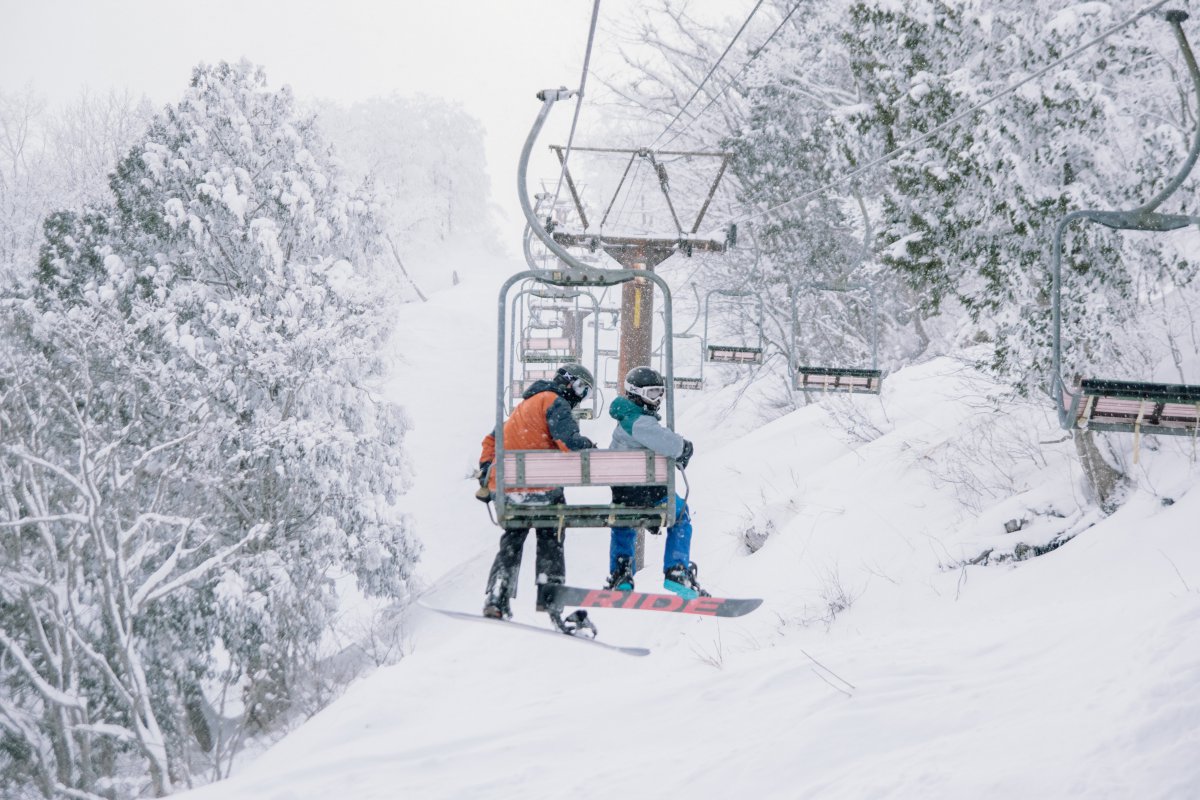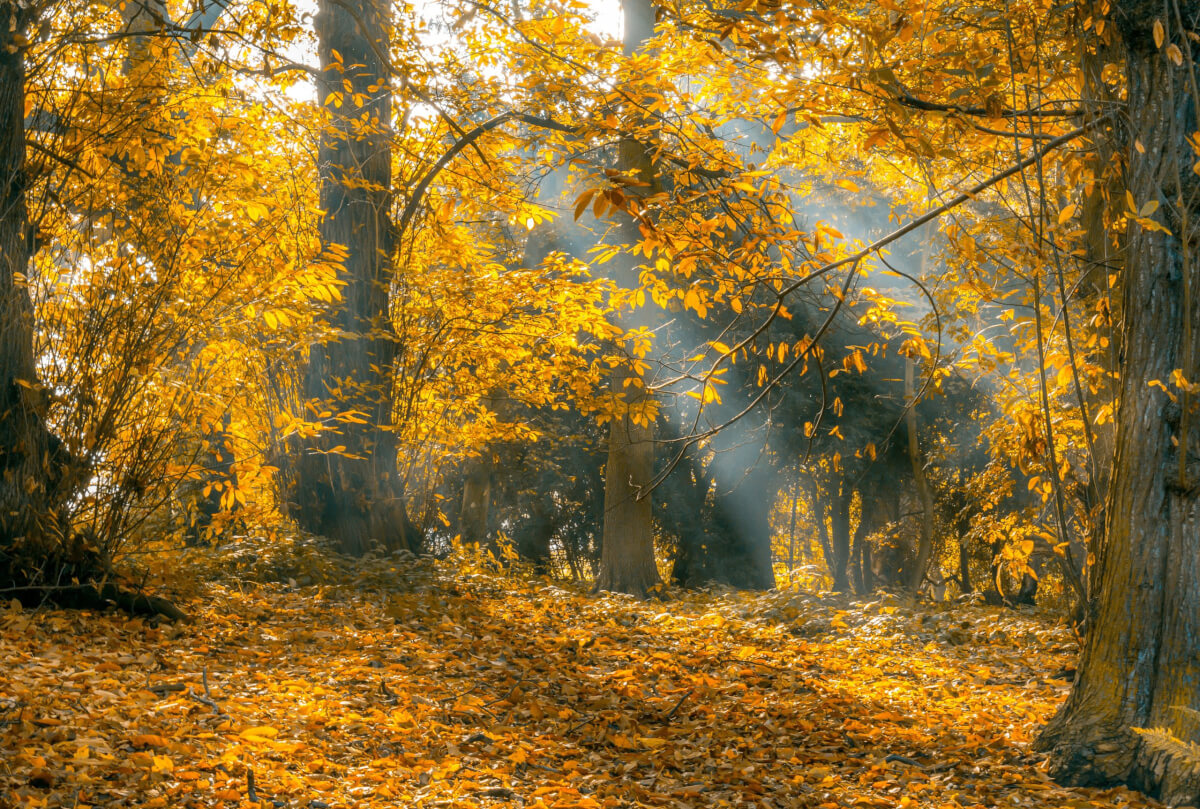Do you love winter sports? If so, you should come to Japan in the brilliant winter season. Japan has a high reputation as a winter sports destination and for good reason. You will be amazed by the high quality of the snow, also known as Japow. Ski resort holidays are a relatively new attraction for foreign visitors. For decades, Japan has remained off the radar as a ski and snowboard destination. However, international winter sports enthusiasts are increasingly choosing Japan as a preferred winter option. The abundant amount of powder snow is unbeatable. Japan holds the planetary record for the deepest snow cover ever recorded! Luckily or not, most Japanese skiers greatly prefer the groomed runs, so the deep powder is often left for foreign visitors to discover.
Another advantage is Japan’s culture, special cuisine, warm hospitality, and unique varied lodging options. You can also find many relaxing onsen (natural hot springs) where you can spend some precious moments soothing your muscles after a long day of skiing. An overall cost of a ski holiday in Japan is usually quite affordable, especially for Americans; from the lift tickets to food and comfortable lodging, too. The winter sports season in Japan officially starts in December and lasts until April, with the best conditions typically in January and February.
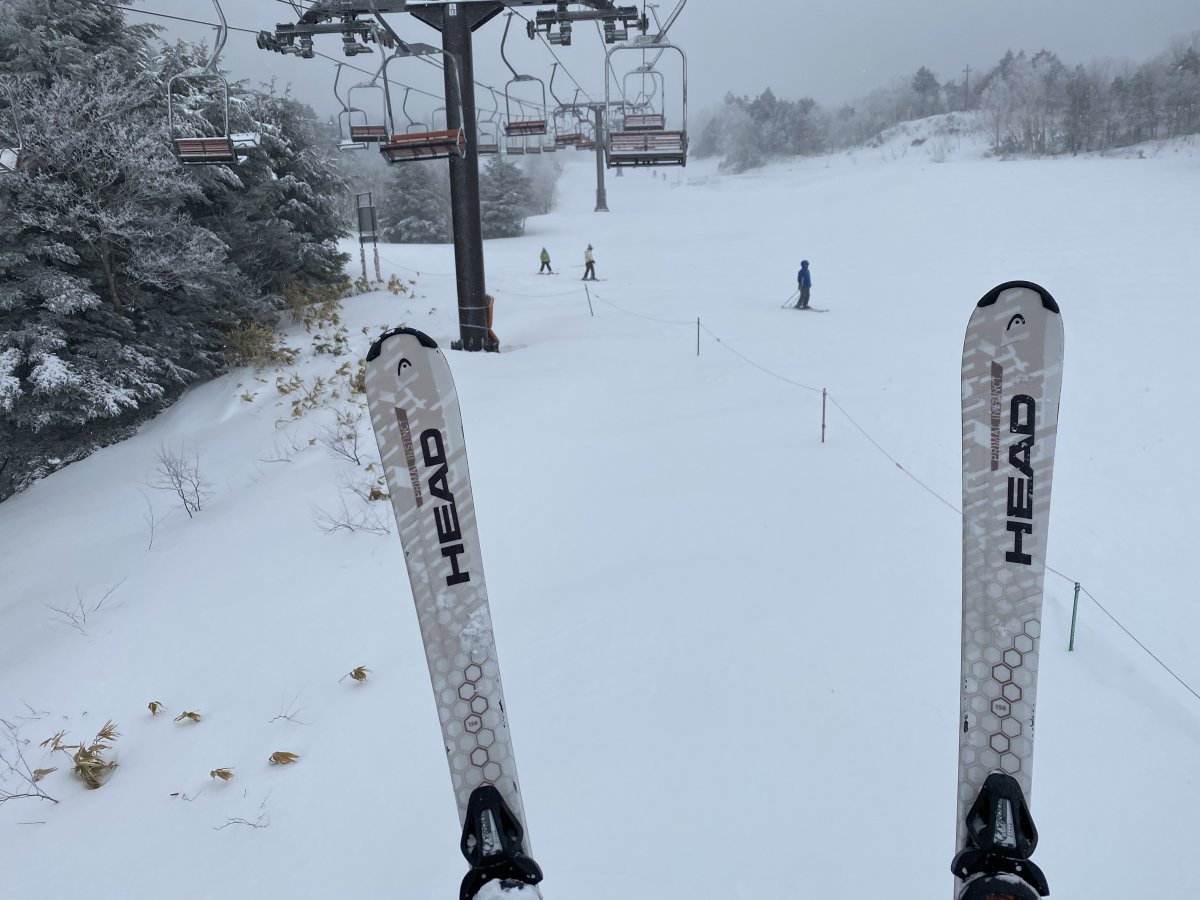
Planning your ski trip to Japan may be a bit more complex than arranging one in your own country, primarily due to the language barrier. Many vacationers choose to book through an agency. To help you out, we’ve listed below some of the best ski resorts in Japan, as well as explained the differences and accessibility of each, so that you can choose one that best suits your needs.
Ski resorts in Nagano
Nagano gained international fame after the Winter Olympic Games of 1998 were held in the area. The area is known as the Japanese Alps and has many great options for winter sports lovers of all levels. Nagano offers a more traditional Japanese option than Hokkaido; few large hotels but many charming ryokans (classic inns). There are fewer local English speakers here than in the ski resorts of Hokkaido, but the close proximity to Tokyo can make it a convenient holiday destination. From Tokyo, a trip to Nagano can also be done as a weekend trip easily.
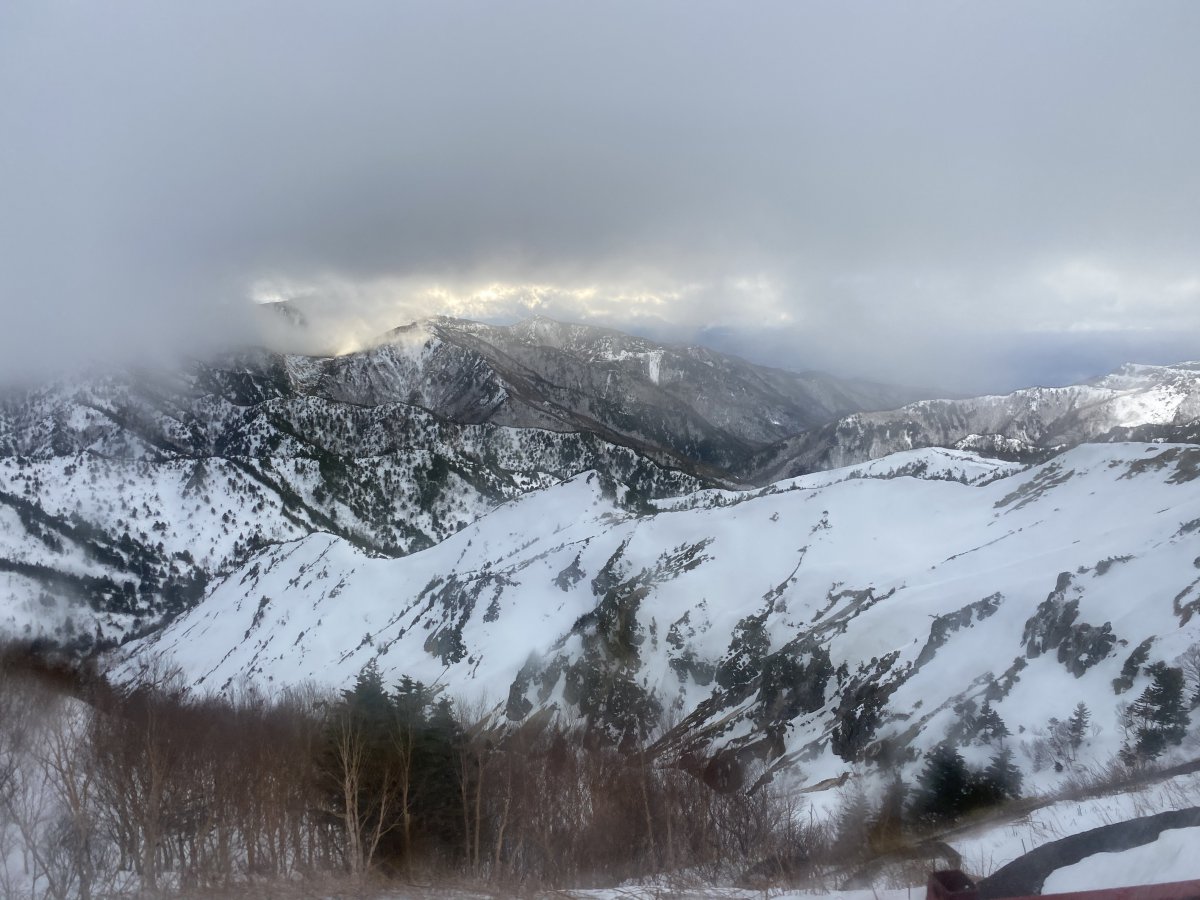
Shiga Kogen
Shiga Kogen is Nagano’s most extensive ski area and Japan’s largest ski resort, made out of several smaller resorts. The seemingly endless terrain of ski and tree runs takes days to explore; something the locals lovingly refer to as a ski safari. Shiga kogen consists of 18 ski areas of different sizes and it has a higher altitude than the other Nagano resorts. Because of the elevation and the cold temperatures, Shiga Kogen has some of the best and most reliable powders in Japan.
Open: December 2, 2023 – May 6, 2024
Height: 1,340m to 2,307m
Runs/slopes: 83 km (easy: 41 km, intermediate 30 km, difficult 12 km)
Recommended tours
Access to Shiga Kogen
Take the Shinkansen from Tokyo directly to Nagano station (~1h45m). Change to the Nagano Dentetsu Line to Yudanaka Station (40 min). From there it’s about an hour to the Shiga Kogen Ski Area by bus. For those already in Nagano City, you can take a Nagaden Bus directly from Nagano Station.
Hakuba Valley
Hakuba Valley is known for its bottomless powder, and you can find many runs along the steep terrain here. Of Hakuba’s 11 mountains, Cortina is where skiers go for the snow-covered off-piste tree runs. Of course, there are plenty of groomed slopes too. Hakuba gained international fame when it hosted several competitions during the Winter Olympic Games. The main village, Happo, is home to some excellent eateries, but there are also quieter, quaint villages in the area for those who want to stay away from the crowds.
Open: Early December 2023 –
Height: 760m – 1,831m
Runs/slopes: 52 km (easy: 16 km, intermediate 26 km, difficult 10 km)
Access to Hakuba Valley
Take the shinkansen from Tokyo to Nagano and then an express bus from Nagano to Hakuba; the bus stops at Hakuba Station and is directly at the base of several ski resorts.
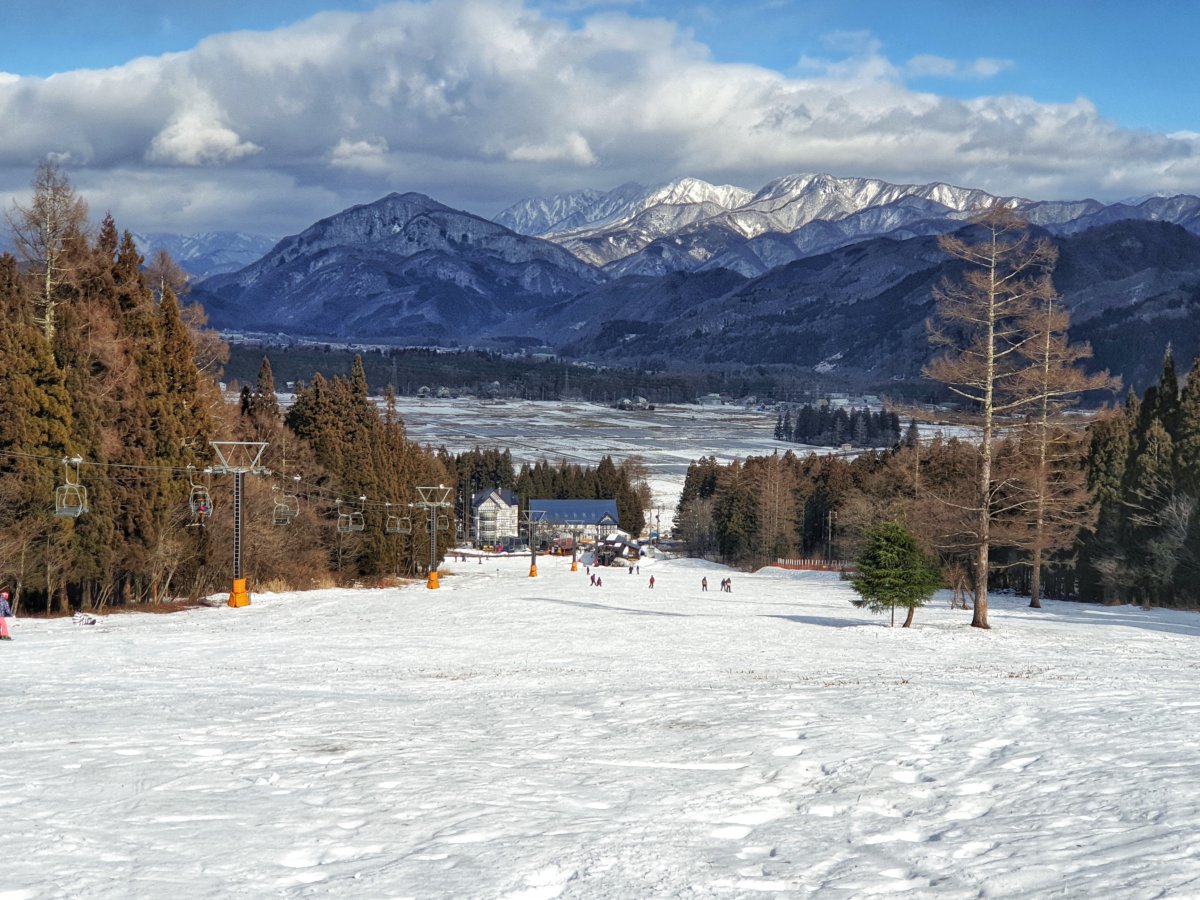
Madarao Mountain Resort
Set on the border between Niigata and Nagano, Madarao mountain resort has been gaining in popularity recently. With the highest number of official tree runs in Japan and 60% ungroomed courses, Madarao offers an exciting alternative to the big resorts. Madarao is relatively undiscovered by international skiers and is one of the best value-for-money resorts.
Open: December 17, 2023 –
Height: 800m to 1,340m
Runs/slopes: 34.8 km (easy: 10.4 km, intermediate 12.2 km, difficult 12.2 km)
How to access Madarao Mountain Resort
From Tokyo take the Hokuriku Shinkansen to Iiyama. Here a direct shuttle bus service will take you to Madarao Kogen in 30 minutes.
Read more about the best places to visit in Nagano
Ski resorts in Hokkaido
Hokkaido receives more snow and powder than any other place in Japan. Its ski resorts, with many (native) English-speaking employees, and serving a variety of international cuisine, feel more Western-like than other resorts. Hokkaido’s ski resorts, especially Niseko, are also much easier to navigate. The best snow falls in January and February when the snow is almost powdery. During this time more than half of the visitors are from overseas.
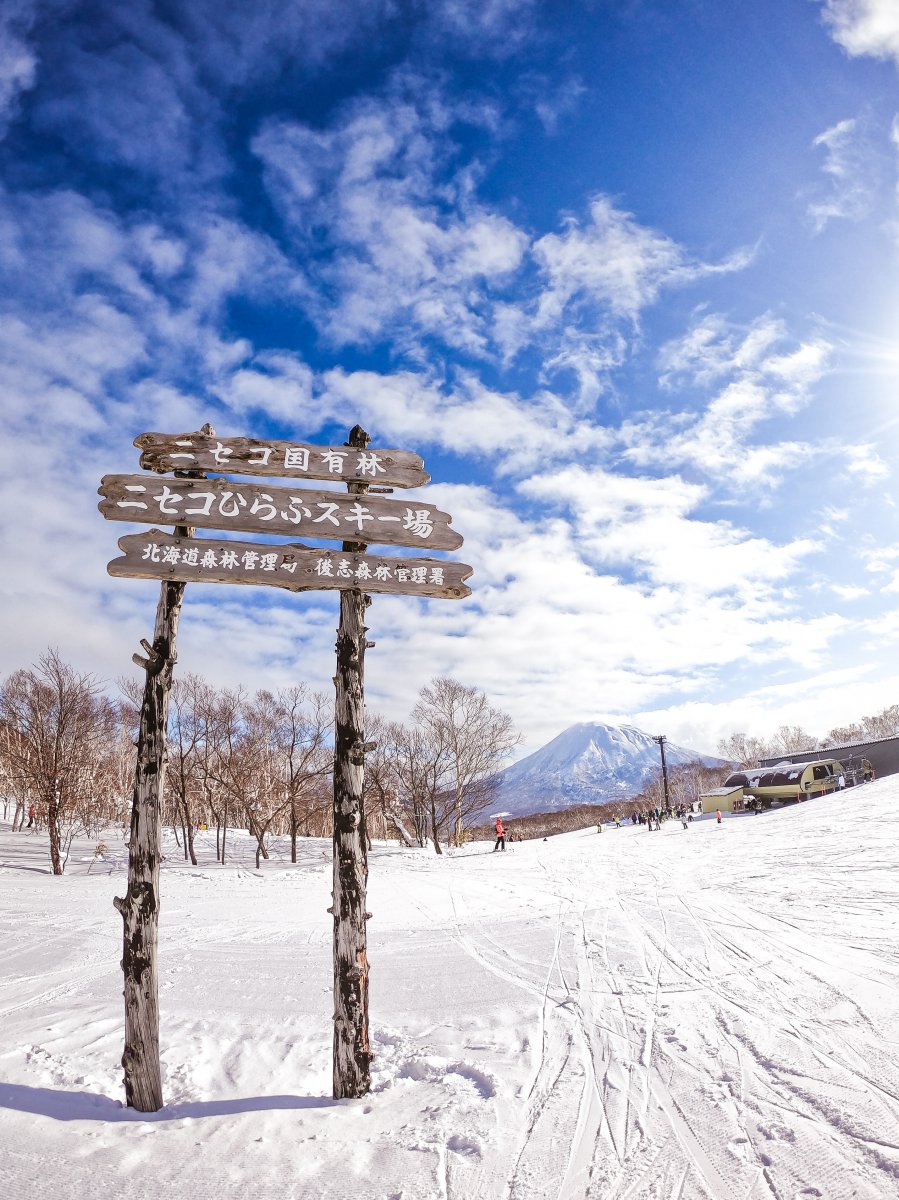
Niseko
Niseko comprises four ski resorts; Grand Hirafu, Hanazono, Niseko Village and Annupuri which join together at the top of the mountain, making it possible to ski between them. Niseko is Japan’s most visited ski resort, with a wide array of hotels, bars, more than 30 lifts, and a very international feel. Niseko is praised for the consistency and quality of its powder snow. The ski resort offers kilometers of ski slopes along with other exciting winter adventures such as off-piste skiing with guided tours and helicopter tours. While skiing or snowboarding you can enjoy the stunning views of Mt Yotei, often referred to as the Mt Fuji of Hokkaido for its perfectly symmetrical form.
Open: December 2, 2023- May 6, 2024 (Grand Hirafu)
December 2, 2023 – April 7, 2024 (Hanazono)
December 1, 2023 – April 7, 2024 (Niseko Village)
December 2, 2023 – May 6, 2024 (Annupuri)
Height: 255m to 1,188m
Runs/slopes: 50.8 km (easy: 22.4 km, intermediate 18.2 km, difficult 10.2 km)
How to access Niseko
Sapporo has a major international airport; New Chitose International. From December to March, multiple bus companies run direct buses between Sapporo City and Niseko. The bus ride can take between 2.5 and 4 hours depending on pick-up location and destination. Some guests rent cars for the two-hour drive from or to Niseko. Driving in Japan is very easy and safe, read our blog about driving in Japan.
Within Niseko, the Niseko United Shuttle makes it easy to visit all spots in the region. The shuttle is free to use for those with a ski pass.
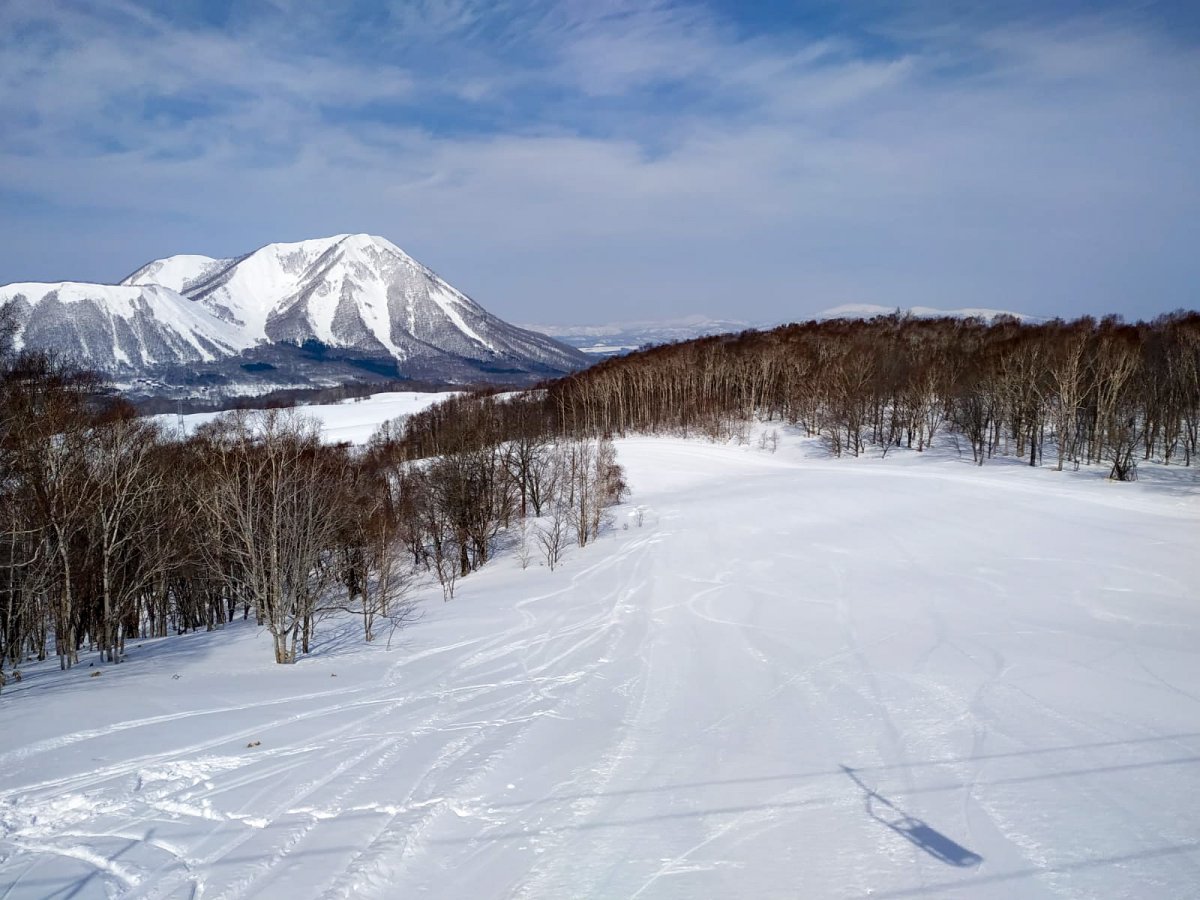
Furano
Furano is an ideal family destination that offers a quieter and more relaxed atmosphere than other resorts. The area is located in central Hokkaido and is known for its stable weather. The ski area of Furano is made up of two zones: the Kitanomine zone (open mid-December to late March) and the Furano zone (open late November to early May) and together offers a variety of beginner trails as well as runs for more advanced skiers.
Open: November 25, 2023 – May 6, 2024 (Furano zone)
Late December 2023 – March 24, 2024 (Kitanomine zone)
Height: 245m to 1,074m
Runs/slopes: 32 km (easy: 15 km, intermediate 13 km, difficult 4 km)
How to access Furano
Both ski areas are easily accessible from the town of Furano by shuttle. Take a JR limited express from Sapporo to Takikawa and transfer to a local train to Furano; the entire trip takes about two hours.
Ski resorts in Niigata
Niigata prefecture, north of Nagano, features an impressive range of mountains, each with a high average of seasonal snowfall of high quality. The fifth-largest prefecture of Japan is relatively easy to get to from Tokyo. There are many local sake brewers and onsen in the area too, helping to make for a more memorable trip.
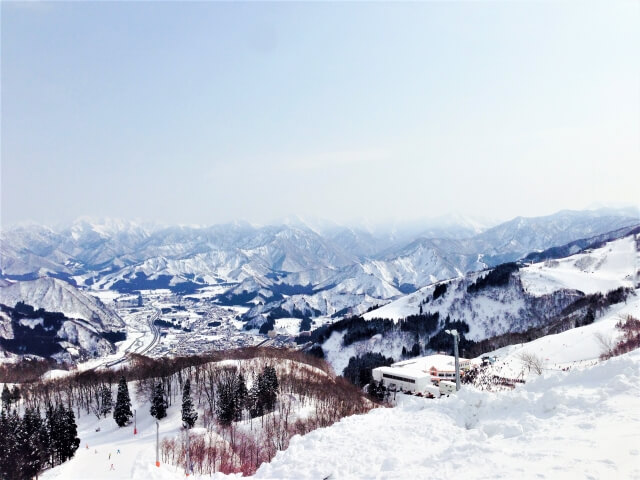
Yuzawa
Yuzawa is home to the best-known Niigata ski areas and boasts the nickname “snow country”. The relative ease of accessibility and convenient services make Gala Yuzawa ski resort extremely popular for day trips from Tokyo, and the resort increasingly caters to a growing number of international visitors.
Open: December 16 2023 –
Height: 256m to 1,181m
Runs/slopes: 33.8 km (easy: 14.8 km, intermediate 12 km, difficult 7 km)
How to access Gala Yuzawa
The town of Yuzawa is only 75-90 minutes from Tokyo by Shinkansen and the ski resort is connected to the station directly.
Naeba
You may know Naeba as the host of the Fuji Rock Festival held in August, but if you come in the winter you’ll enjoy the breathtaking scenery of the Joetsu region. Naeba is a popular skiing destination for the popular long snow season which lasts until May. The Naeba Prince Hotel forms the centerpiece of the resort and is the main accommodation and hub for restaurants, facilities, and activities.
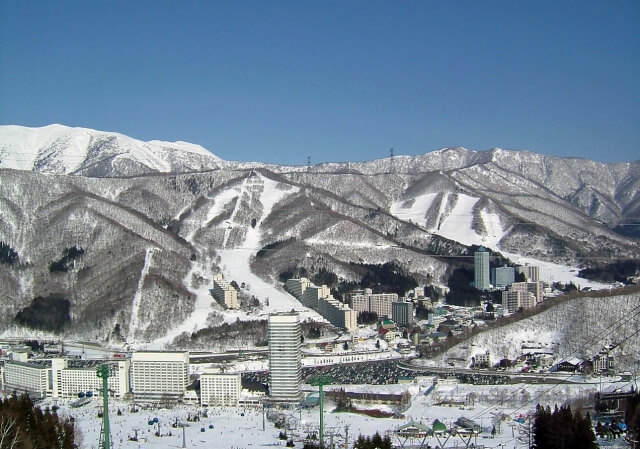
Open: Information being updated by the official website.
Height: 900m to 1,855m
Runs/slopes: 20 km (easy: 6 km, intermediate 8 km, difficult 6 km)
How to access Naeba
From Tokyo take the Shinkansen to Yuzawa Station. From there take a bus for 30-50 minutes.
Myoko Kogen
Myoko Kogen is a group of ski resorts located just 34 km north of the city of Nagano. Some of the Myoko ski areas include Myoko Akakura Onsen, Seki Onsen, Ikenotaira and Suginohara. The zone is well known for very abundant snowfall (between 13-15 meters each year) in combination with its more traditional atmosphere. For those who’d like to experience some Japanese culture too, Myoko is the best option. Myoko is a great choice for powder hounds and those wanting to explore multiple ski areas.
Open: Not officially announced yet
Height: 90m to 2307m
Runs/slopes: 32 different courses for all levels (including Japan’s longest run at 8.5km).
How to access Myoko Kogen
Take the JR Hokuriku Shinkansen to Nagano from Tokyo, and change to a local line to Myoko Kogen Station.
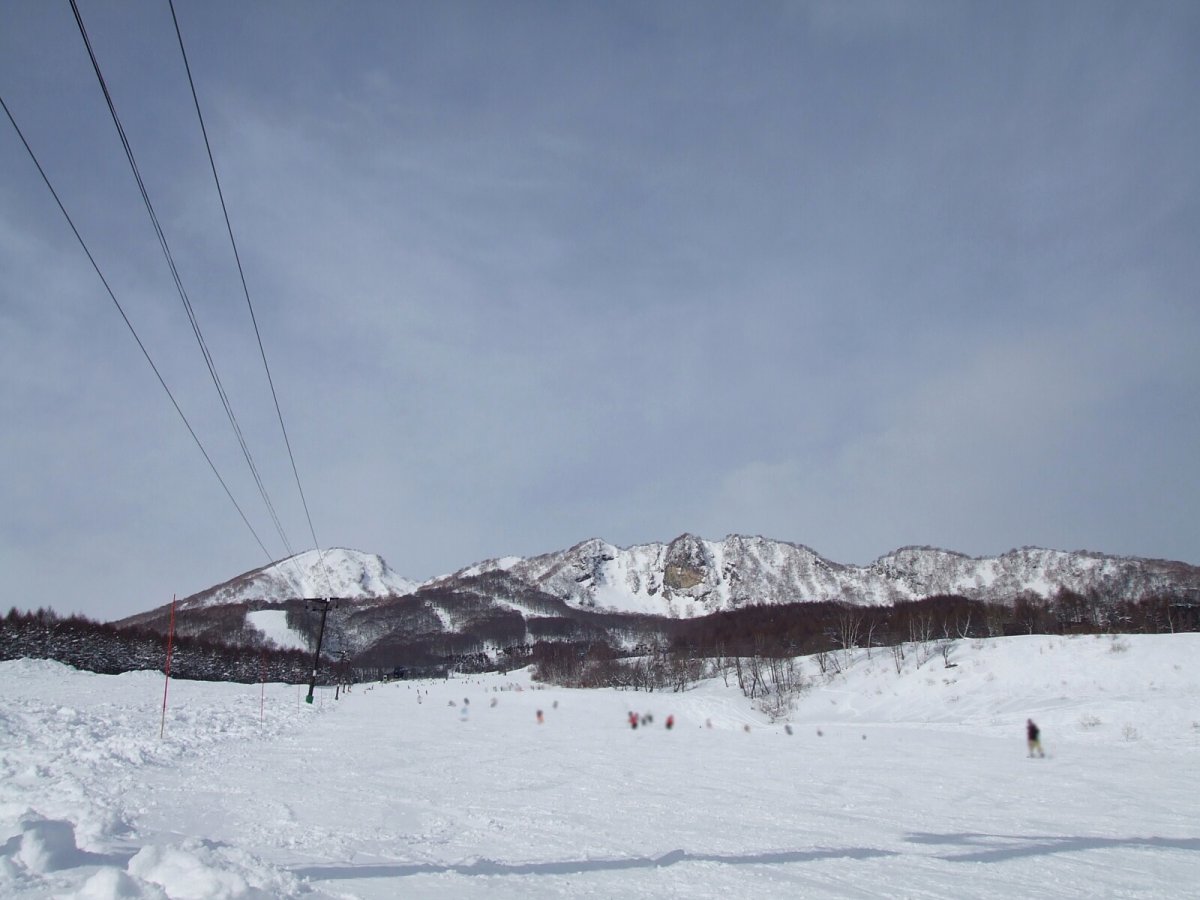
Ski resorts in Yamagata
Yamagata attracts many international skiers due to its accessibility by Yamagata Shinkansen, a serious amount of snow and a variety of ski slopes. Especially in recent years, the Zao Onsen area has seen rising numbers of Asian tourists who love viewing the picturesque frost-covered trees, affectionately known as Snow Monsters, as and hot springs.
Zao Onsen
Zao Onsen is the name of the traditional onsen hot spring village, beautifully nestled high up in the Zao Mountain Range, and also the ski and snowboard resort. Many of the base ski lifts and courses are within walking distance from the main village, and there is a choice of ski-in ski-out accommodation available. Zao Onsen has a long history, first opening in 1925 with the first ski lift being installed in 1951.
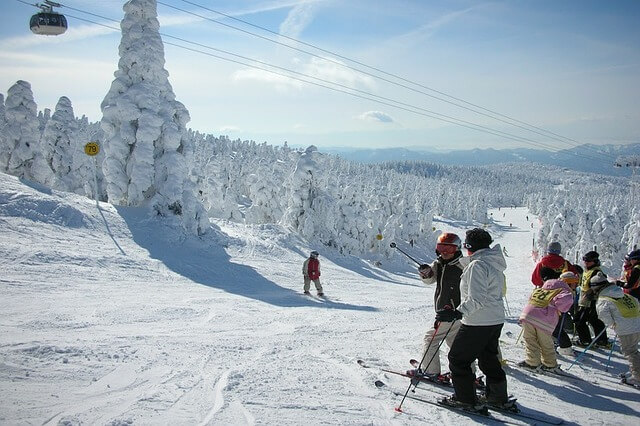
Open: Not officially announced yet
Height: 780m to 1,661m
Runs/slopes: 50 km (easy: 20 km, intermediate 20 km, difficult 10 km)
How to access Zao Onsen
From Tokyo take the Yamagata Shinkansen Tsubasa at either Tokyo or Ueno Station. Get off at Yamagata Station and take a local bus to Zao Onsen.
Kurobushi Kogen
100% natural snow and stable amounts of snowfalls are guaranteed every year. Their ski courses are wide and suitable for beginners. There are 5 courses in total and 4 of them are over 1km long. They also have 3 parks sorted by the different levels and one cross course. You can enjoy skiing or snowboarding with a gorgeous view of Mt. Kurobushi.
Kurobushi Kogen Snow Park Jangle Jungle
Open: December 16, 2023 – April 7, 2024
Height: 700m to 1,030m
Runs/slopes: 5 different courses for all levels
How to access Kurobushi Kogen
From Tokyo take the Yamagata Shinkansen at Tokyo Station. Get off at Sakuranbo Higashine Station and take a free shuttle bus (only on weekends & holidays)
Among winter sports lovers, Japan is known for the large amounts of snow it receives every year in combination with the great facilities and many attractions. The two most popular areas are Nagano and Hokkaido; followed by Niigata, and Yamaguchi. The best conditions can be found up north in Hokkaido, but all ski resorts in Japan offer a great experience for winter sports fanatics of all levels. The winter sports season in Japan officially starts in December and lasts until April, with the best conditions typically in January and February. Skiing Japan is a guaranteed fun experience that you should not miss out on!
Follow us on Instagram or Facebook for more travel inspiration. Or tag us to get featured!
Happy traveling!
Other articles you might like
This post may contain some affiliate links. When you click through and make a purchase we may receive some commission, at no extra costs to you.
